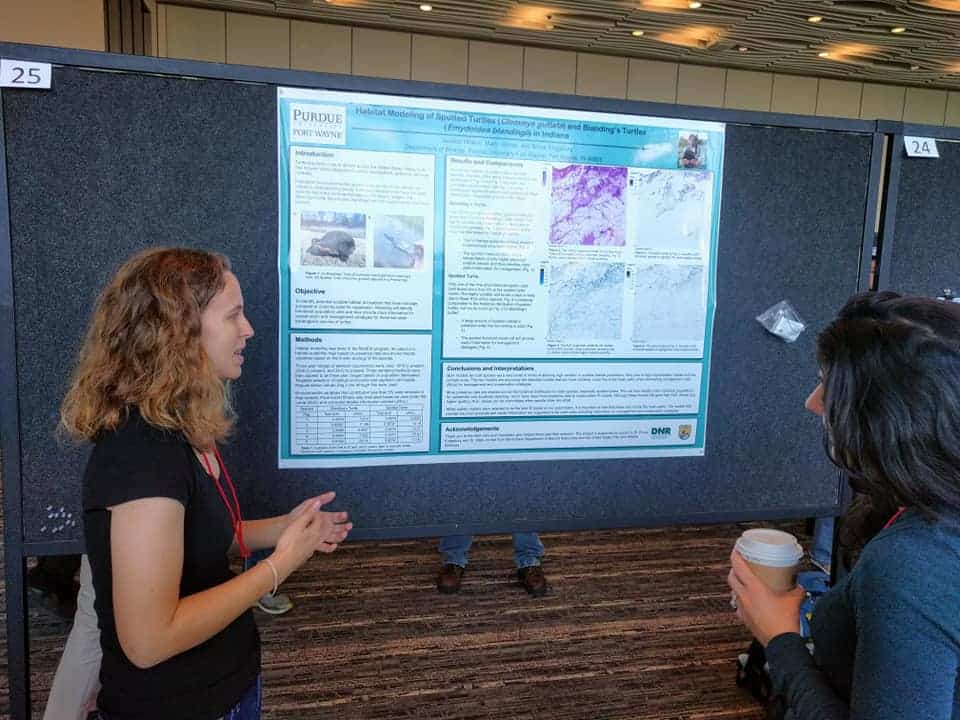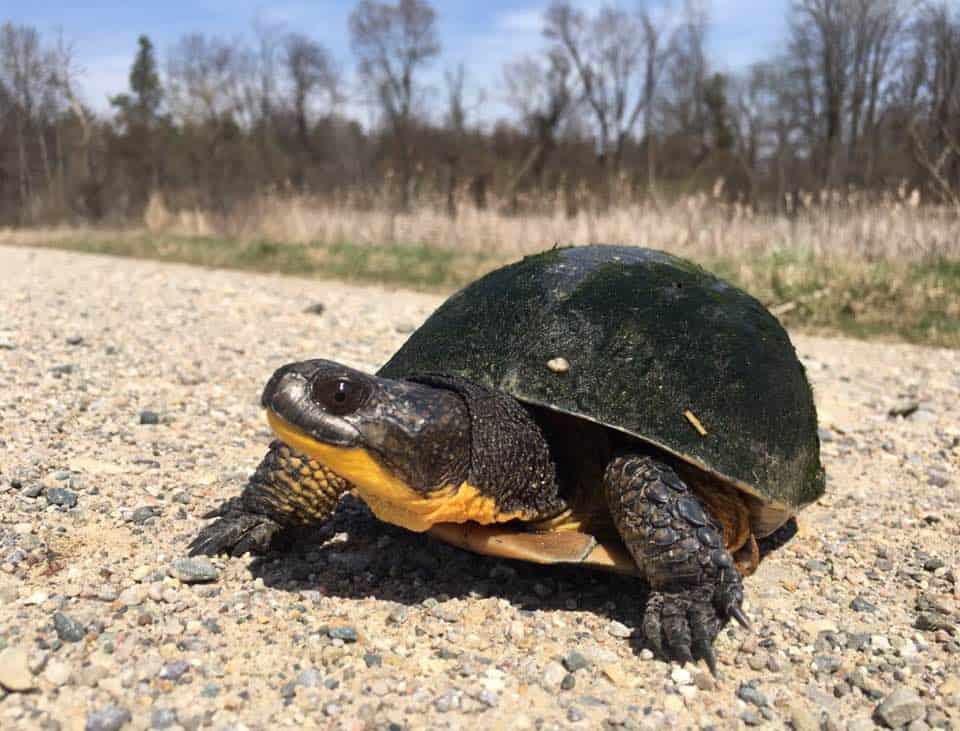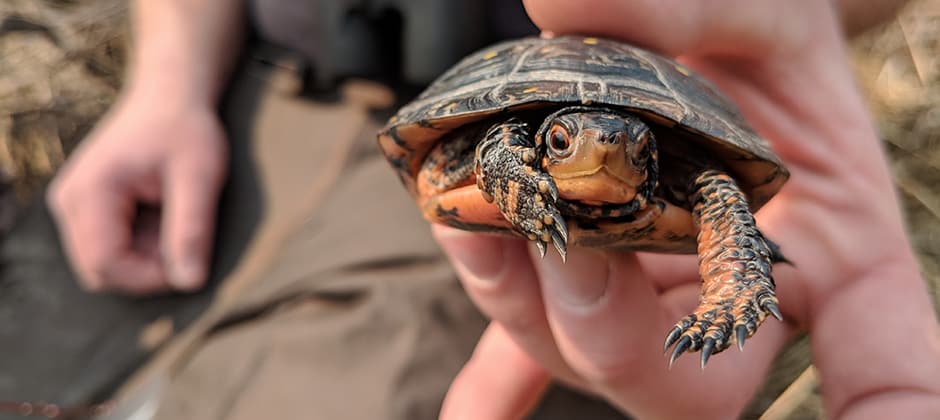Share this article
Student Research: Modeling habitats for endangered Indiana turtles
In northern Indiana, spotted turtles (Clemmys guttata) and Blanding’s turtles (Emydoidea blandingii) face a number of human-caused threats.
While habitat fragmentation, habitat loss and degradation, road mortality and even poaching and illegal pet trade has contributed to the turtles’ decline, researchers wanted to better understand where the turtles occur through a comprehensive population assessment to help inform conservation efforts.
In her prize-winning poster “Habitat Modeling of Spotted Turtles and Blanding’s Turtles in Indiana,” Jessica Hinson, then a master’s student at Purdue University Fort Wayne, analyzed data on historically occupied sites as well as current trapping and survey data in emergent wetlands and uplands occupied by both species. Her poster won second place in the Student Research in Progress at last year’s TWS conference in Cleveland.

Jessica Hinson won second place for her poster on modeling habitat for two endangered turtle species in Indiana. ©Mark Jordan
She and her colleagues set three objectives. The first was to determine the presence of species in the state through historical distribution and through visual observations from state, federal and private agencies as well as their own survey efforts. Another was to identify management units for both species by using habitat modeling. And a third was to determine genetic variation among and between the populations.

Blanding’s turtles also face threats of habitat loss, fragmentation and degradation, and even poaching. ©Jillian Josimovich
“The habitat modeling was basically done in order to try and identify suitable habitat distribution across Indiana based on where species are still found,” said Hinson, now an associate science adviser and biologist for the Amphibian and Reptile Conservancy.
She and her colleagues observed a total of 69 Blanding’s turtles and 70 spotted turtles across the various habitats.
They plugged those occurrences in conjunction with environmental variables like wetlands, types of soils and urban development into a modeling program in order to map out and predict suitable habitat distribution.
Hinson hopes the predictions and maps will be used in future conservation management strategies. In particular, she hopes that officials will use the maps when planning roads that could slice up prime turtle habitat. “This certainly is a good step in the right direction,” she said.
Hinson hopes her poster shines some light on these declining species in Indiana. “I’m extremely grateful and happy my poster was able to provide some information to the public eye,” she said.
Header Image: Spotted turtles like this one are declining in Indiana, and researchers recently completed a population assessment for them. ©Jessica Hinson








